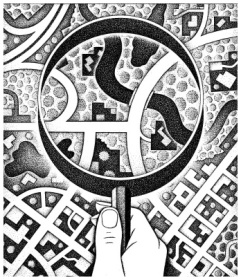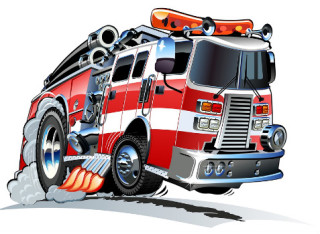Read the start of this article below; to view full article you need to be a PlannersWeb member. Already a member? — be sure you’re logged-in. Not a member? Consider joining the PlannersWeb. Low one-day access rates also available.
The Street Width Safety Issue
 The safety issue takes different paths to achieve that same objective, safer street for pedestrians. New urbanists focus on narrow streets as the most effective way to slow traffic, combining that with increased access points to a neighborhood, allowing for traffic to be more evenly distributed. Others advocate traffic calming devices, particularly as solutions in established neighborhoods with already built wide streets.
The safety issue takes different paths to achieve that same objective, safer street for pedestrians. New urbanists focus on narrow streets as the most effective way to slow traffic, combining that with increased access points to a neighborhood, allowing for traffic to be more evenly distributed. Others advocate traffic calming devices, particularly as solutions in established neighborhoods with already built wide streets.
New urbanists have been on the forefront of advocating narrower neighborhood streets that: (1) slow traffic to 10 and 15 miles per hour; (2) respect and protect the pedestrian; and (3) promote streets as neighborhood activity areas.
 The move toward narrower streets, as proposed in most all new urbanist developments, has met with resistance, chiefly from fire and emergency safety officials in communities where established standards of wide streets have been in place for many years. Both sides — the fire / emergency safety establishment and the new urbanists upstarts — have armed themselves with empirical data proving they are right.
The move toward narrower streets, as proposed in most all new urbanist developments, has met with resistance, chiefly from fire and emergency safety officials in communities where established standards of wide streets have been in place for many years. Both sides — the fire / emergency safety establishment and the new urbanists upstarts — have armed themselves with empirical data proving they are right.
To assist you in deciding where you stand, let’s look at some of the data and issues in the debate to help you decide what is best for your neighborhoods and community. …
You must be logged in or a PlannersWeb member to read the rest of the article.